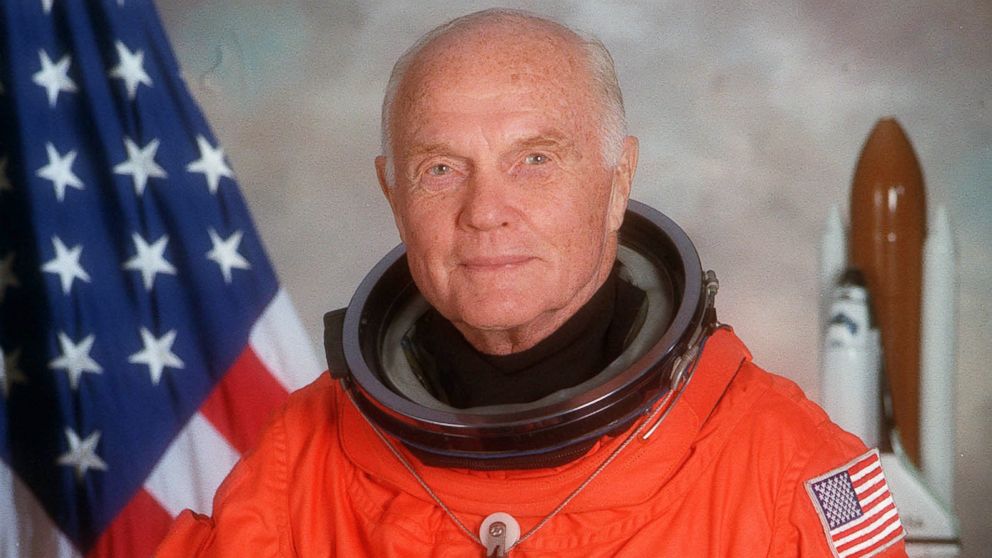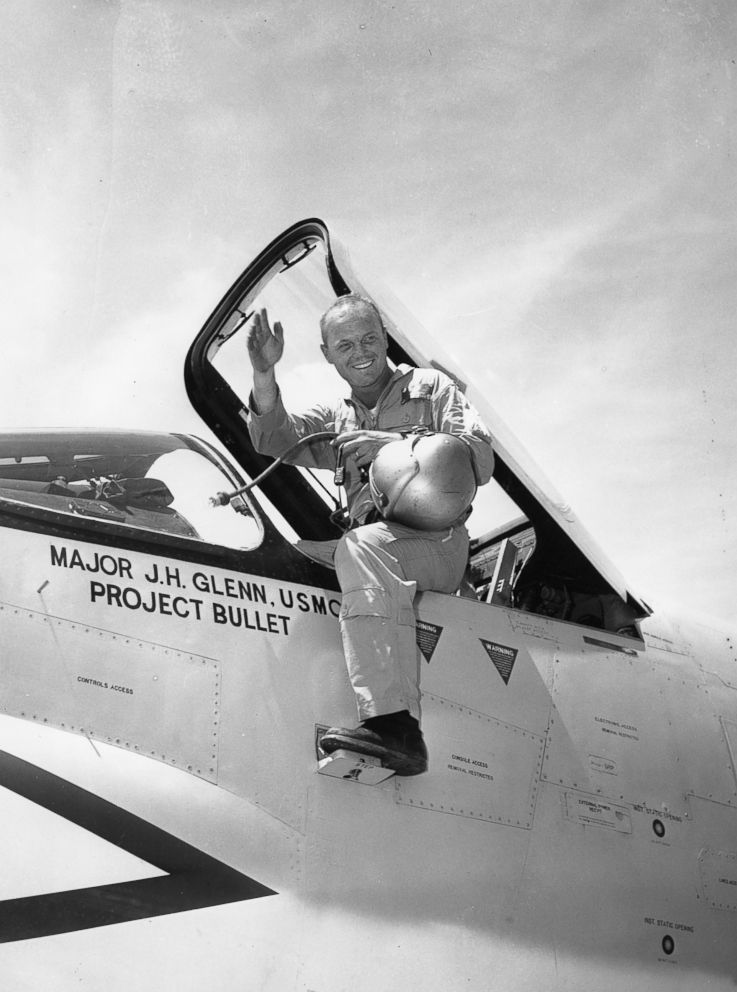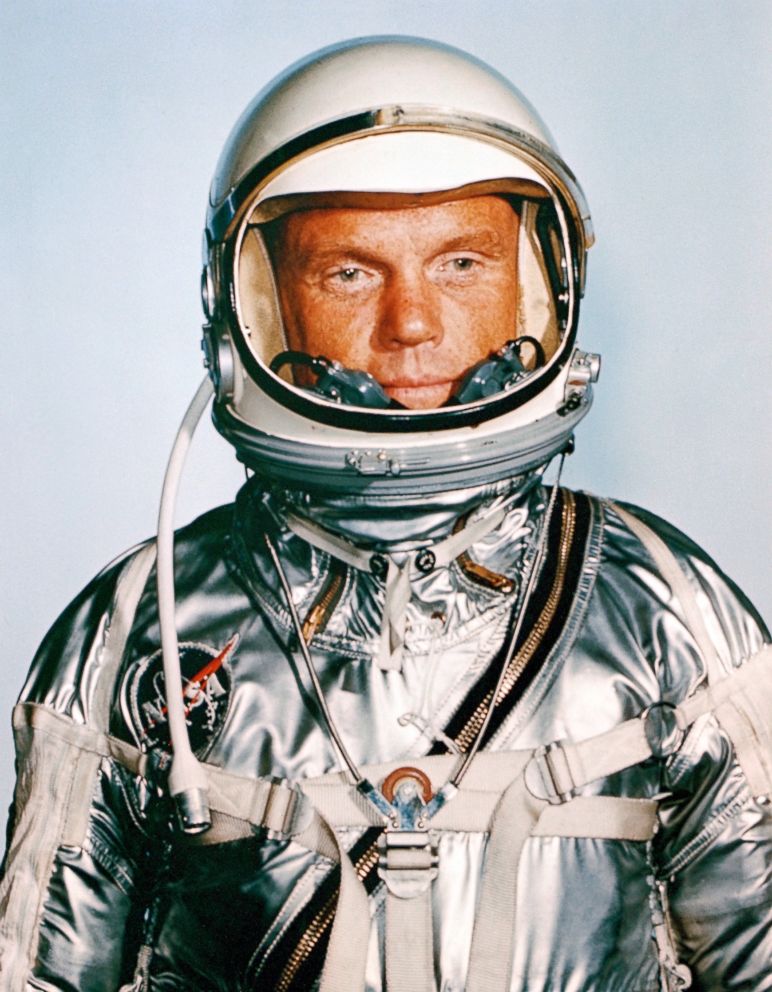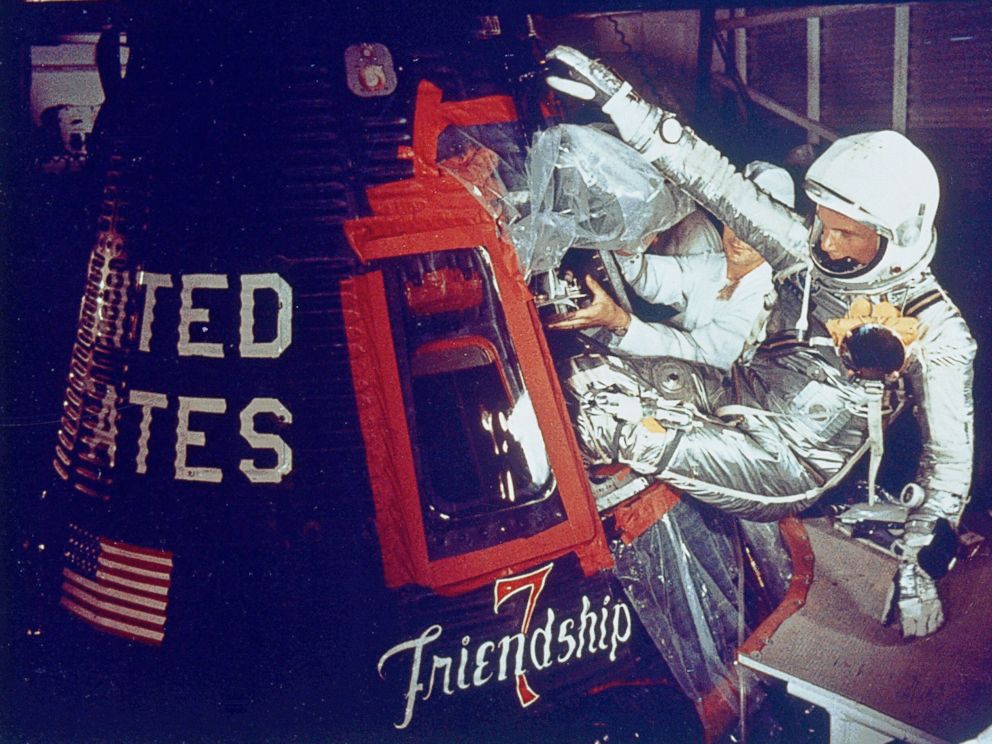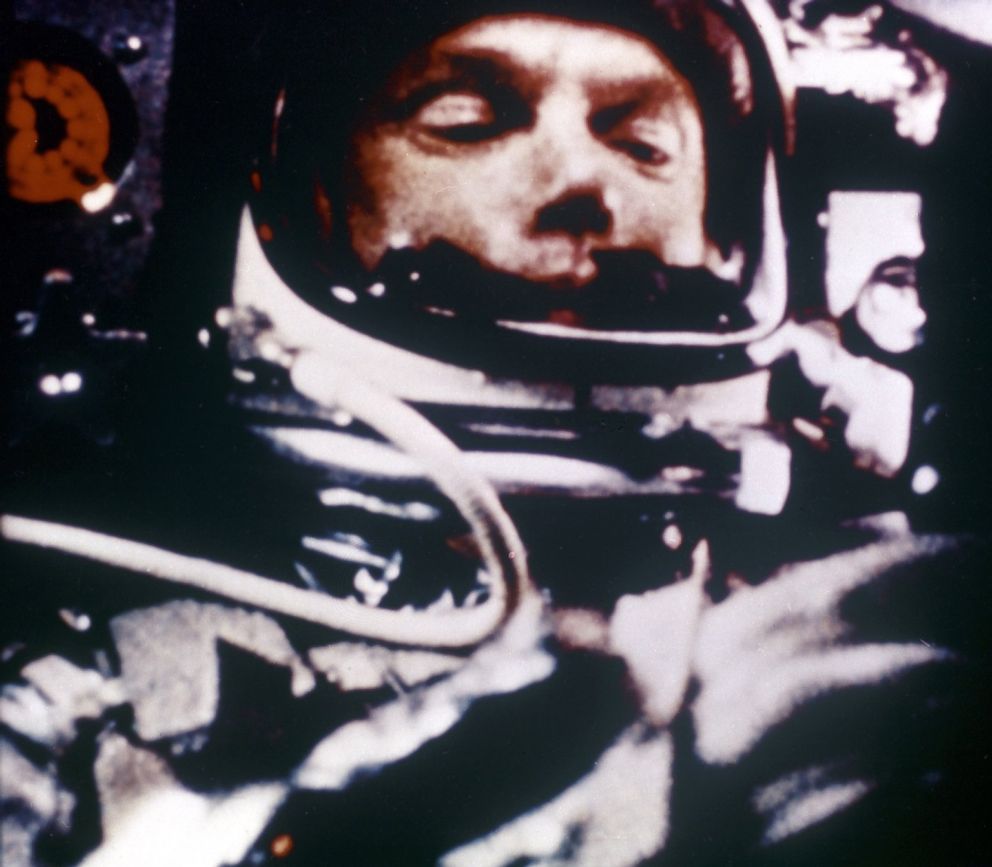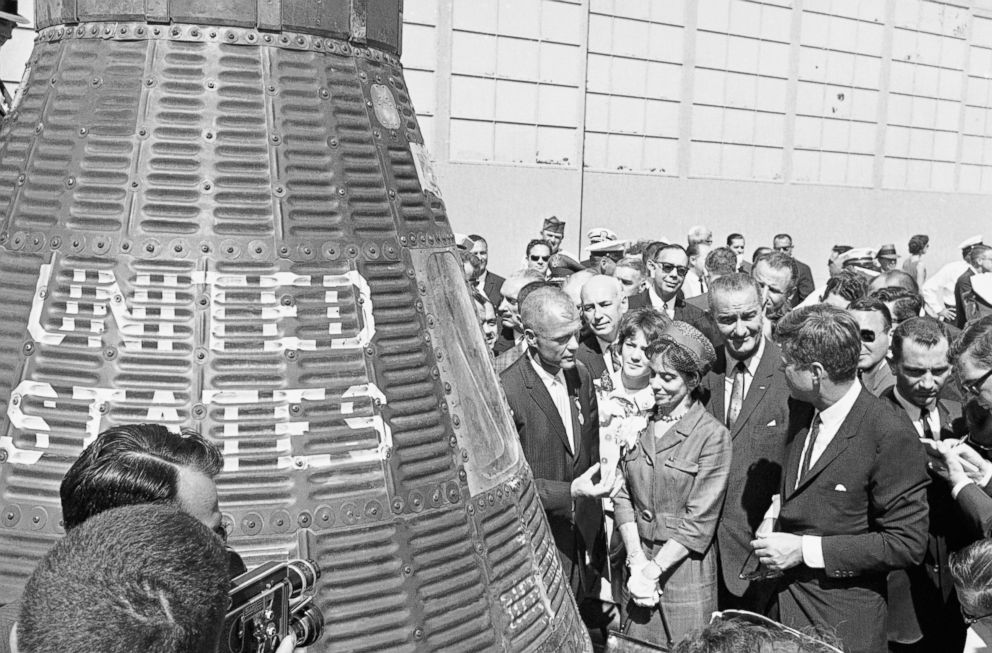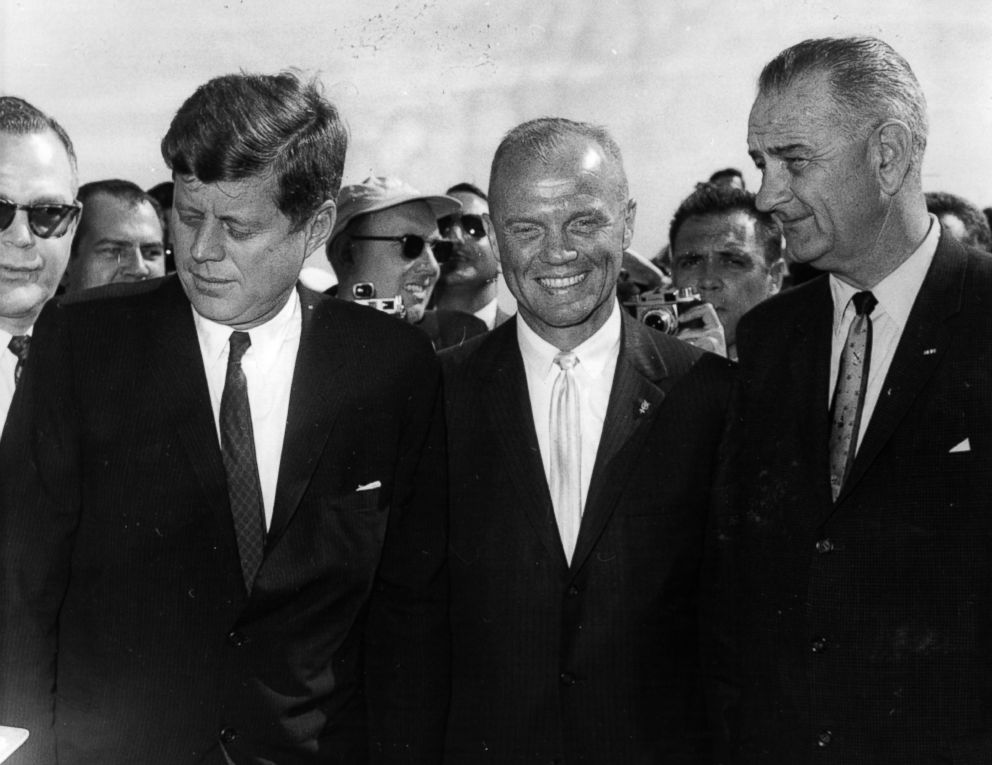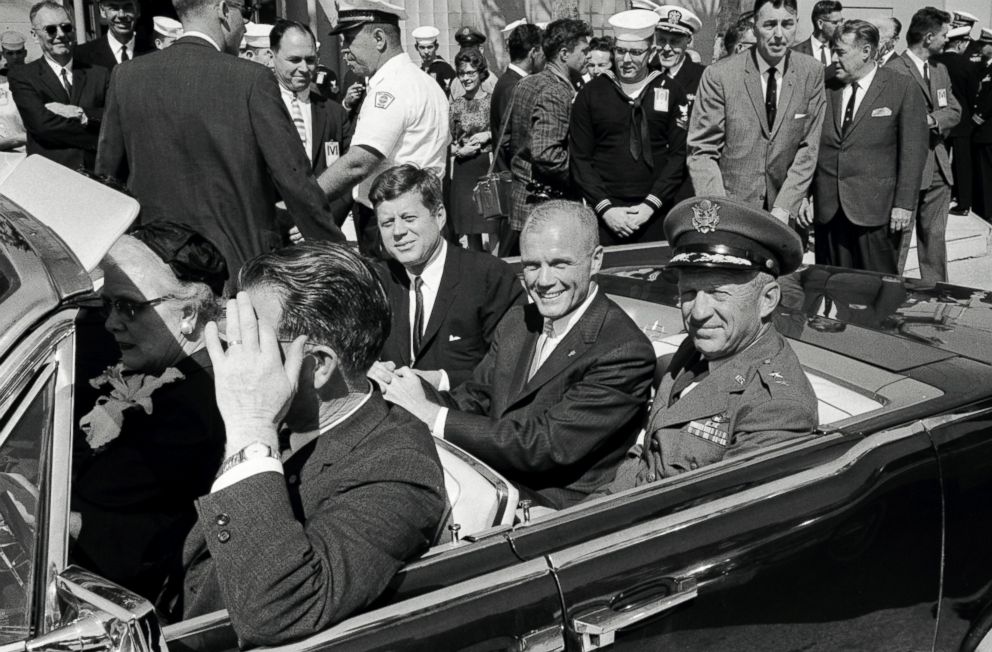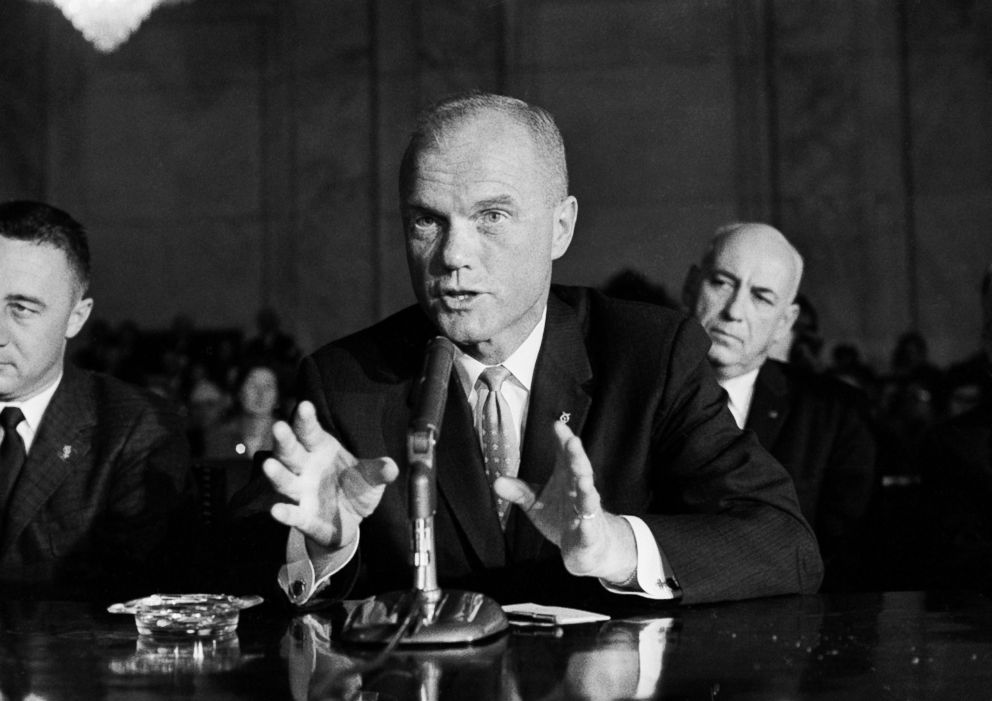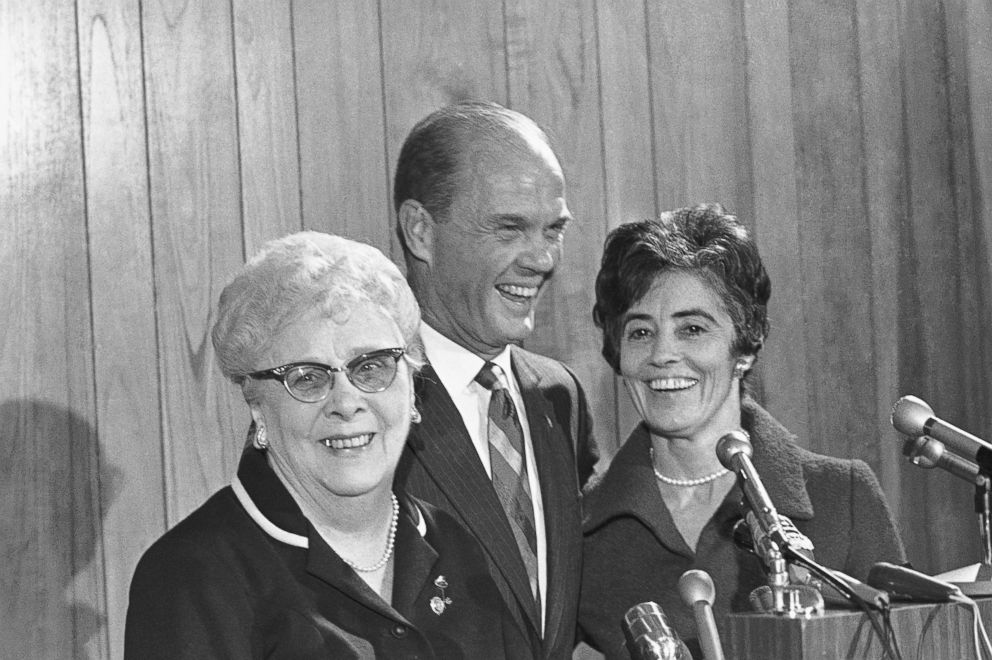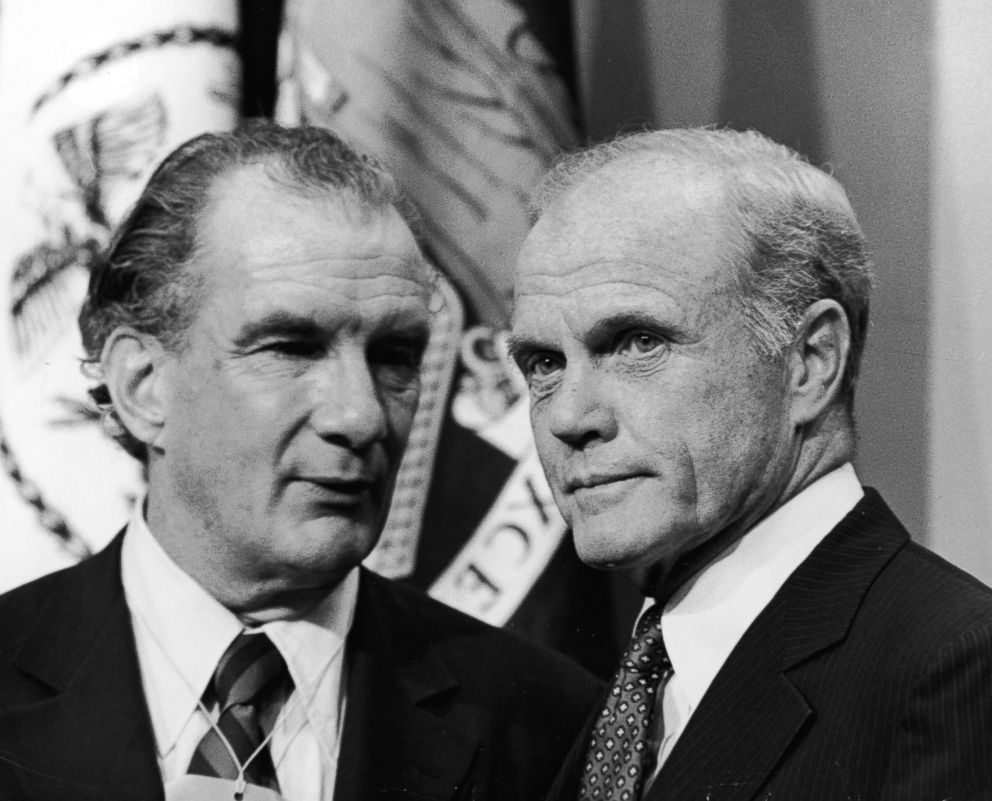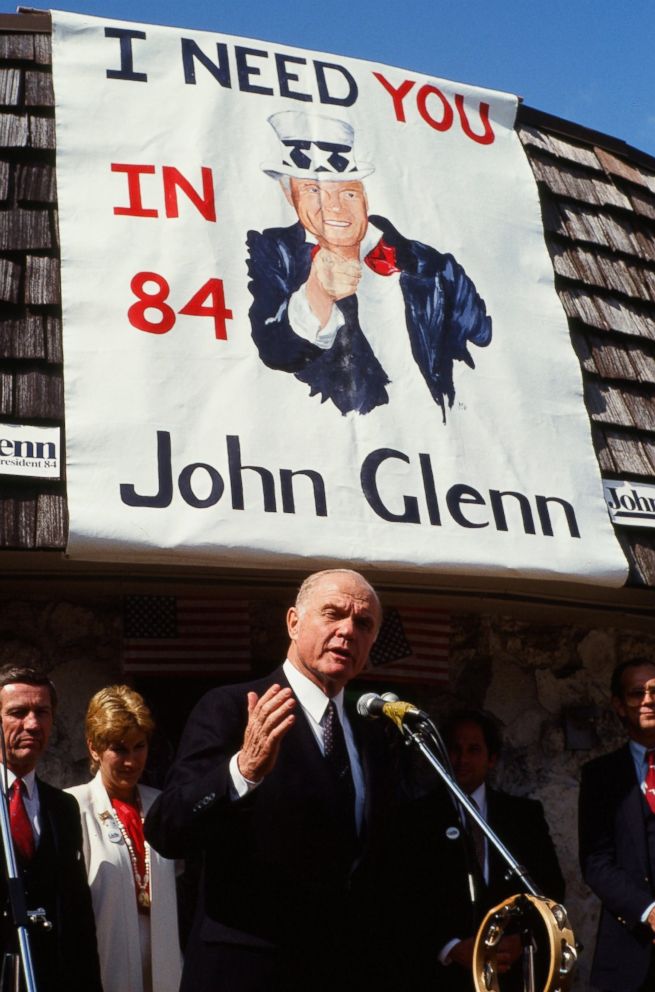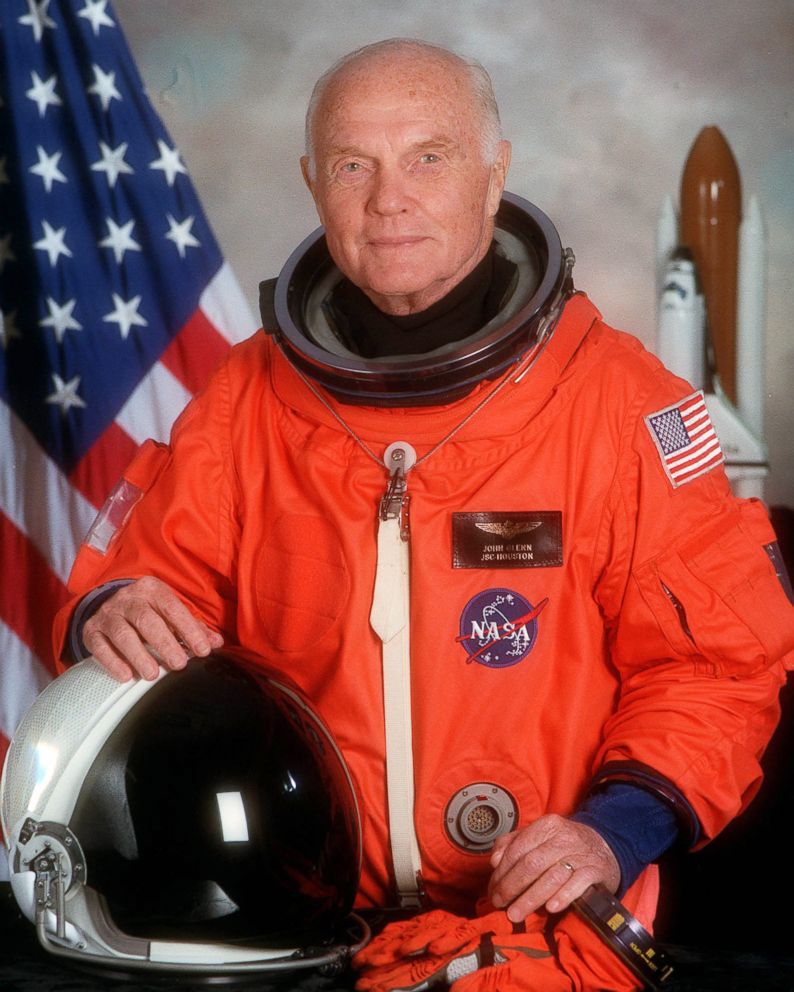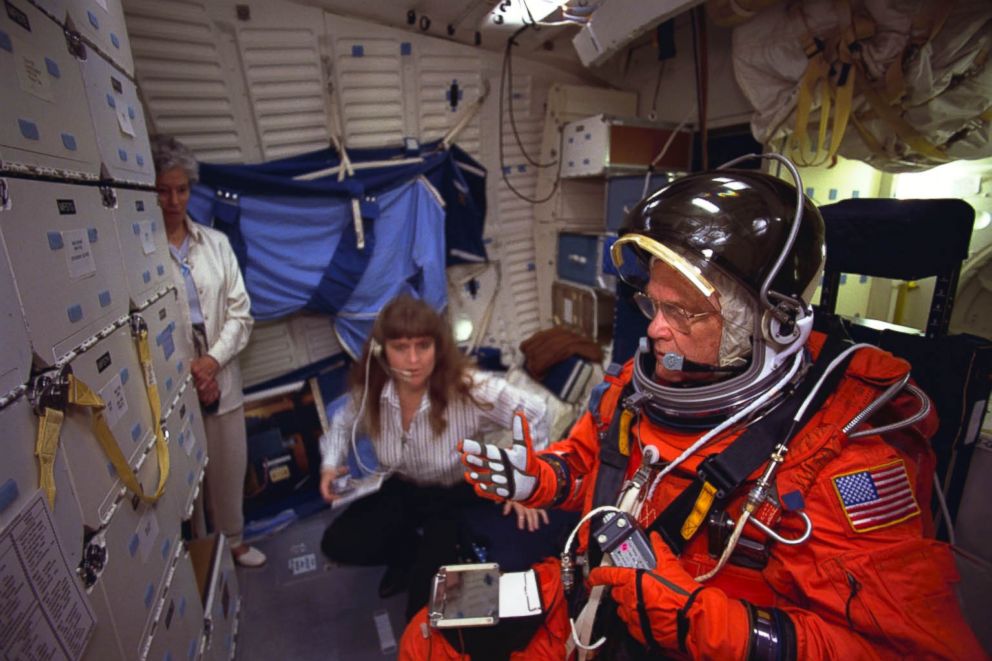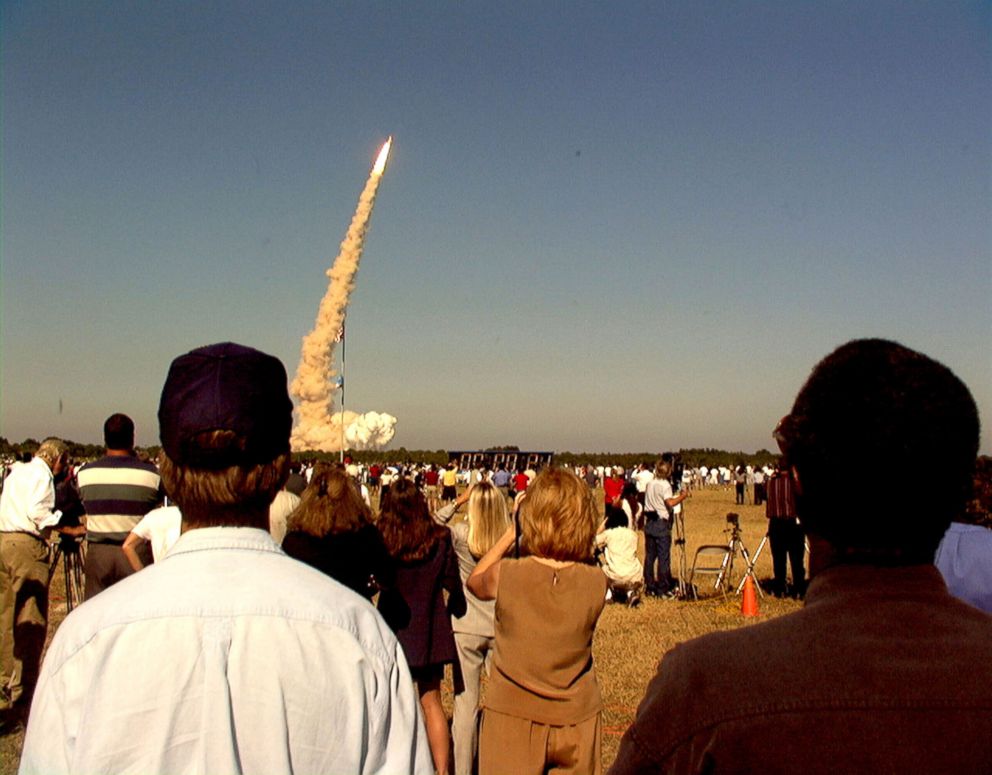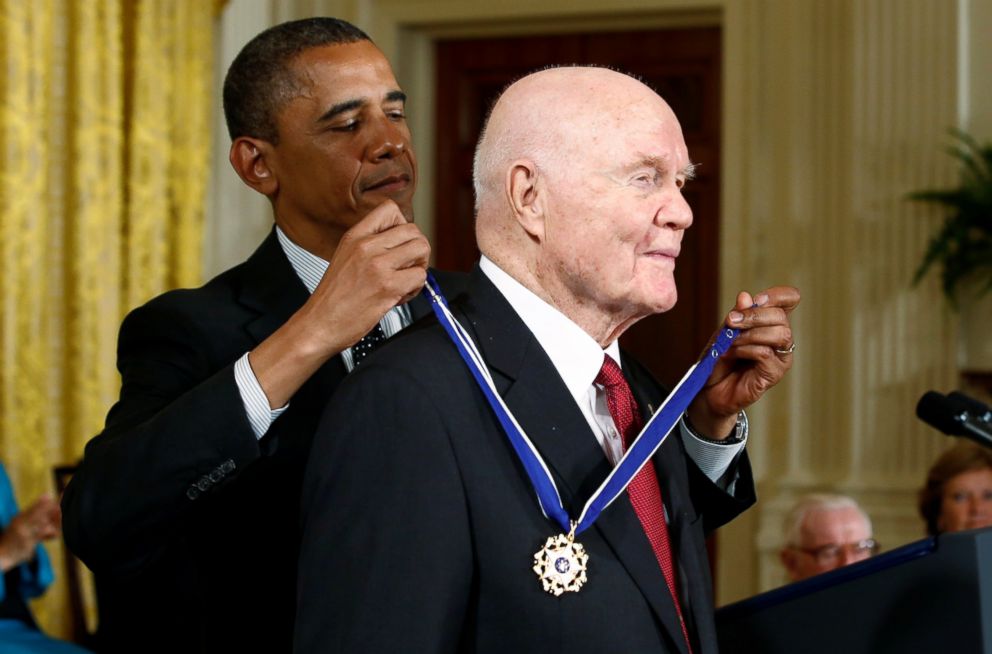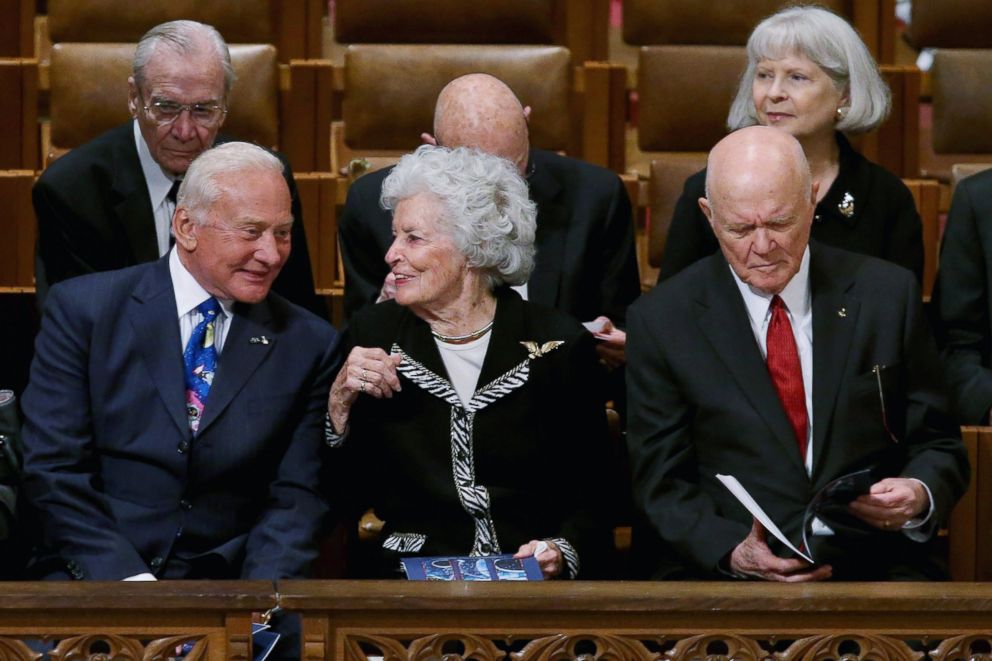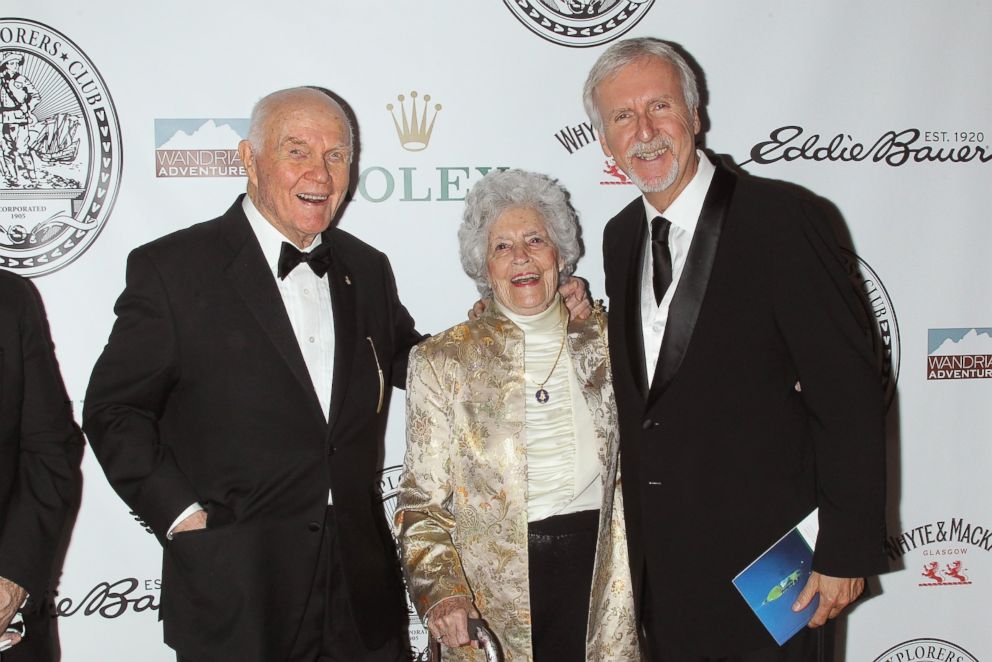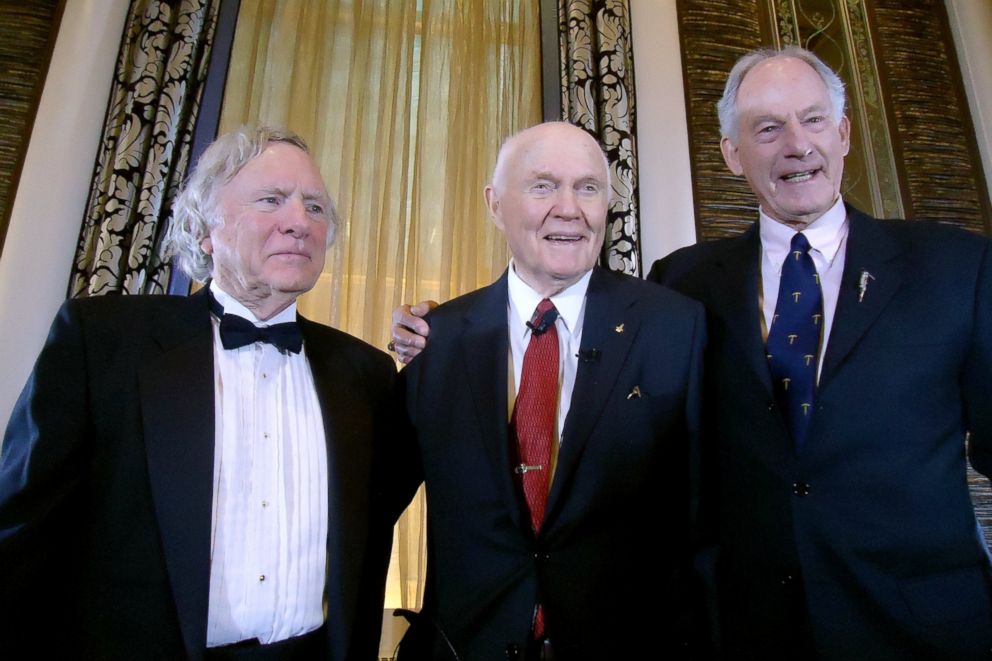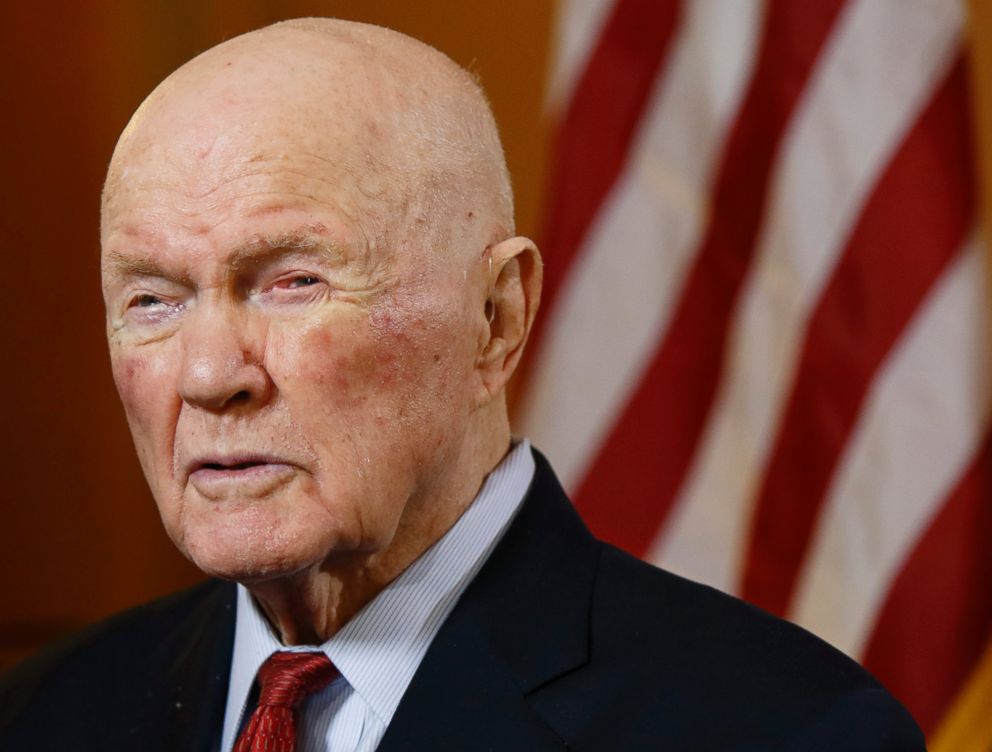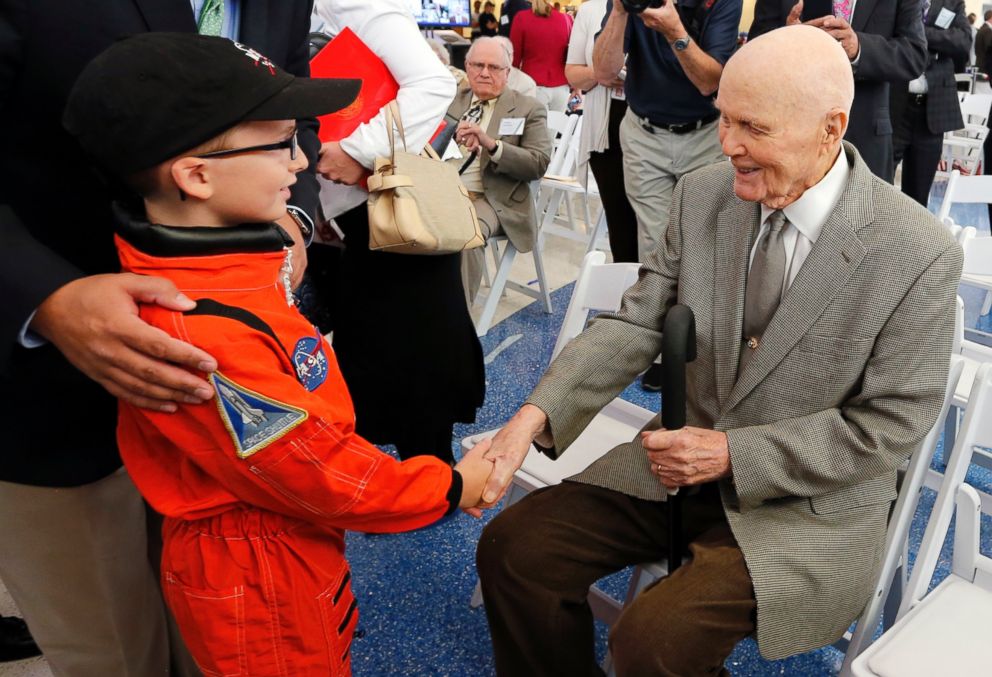John Glenn, 1st American to Orbit Earth, Dies
— -- John Glenn, the first American astronaut to orbit the earth and a legendary figure in the American space flight program, has died, Ohio Gov. John Kasich said. Glenn was 95.
Glenn was one of America's first and most celebrated astronauts and had a long public career that included two space flights, 24 years as a senator from Ohio and a run for the presidency. He was born July 18, 1921.
He will go down in history as the first American to orbit the earth, one of the original seven Mercury astronauts. On Feb. 20, 1962, he climbed into his Friendship 7 capsule, lifted off from Cape Canaveral in Florida, circled the earth three times in five hours — and became a national hero.
"Zero G, and I feel fine," he said from his spacecraft. "Man, that view is tremendous."
It was a troubled world he saw from orbit. The Cold War was at its most chilling. The Soviet Union had launched the first satellite, Sputnik, in 1957, and the first cosmonaut, Yuri Gagarin, in 1961. The United States was anxious to catch up.
"We hadn't really thought that any nation could even touch us technically," Glenn said in a 1998 interview with ABC News. "And all at once, here was this bunch of Soviets over there, for heaven's sake, outdoing the United States of America in technical and scientific things."
Ohio Native, Marine Corps Pilot
Glenn Herschel Glenn Jr. was born in 1921 in Cambridge, Ohio, and grew up in nearby New Concord, the son of a plumber and a former teacher. He married his childhood sweetheart, Annie Castor, and studied at nearby Muskingum College.
He found his calling in the air. In World War II he served as a Marine Corps pilot, flying 59 combat missions, and he flew 90 more in the Korean War. He rose in the ranks as a test pilot.
In 1957 he set a transcontinental speed record from Los Angeles to New York, flying across the country in 3 hours and 23 minutes. In 1959, when the newly formed National Aeronautics and Space Administration went looking for its first astronauts, it looked at military test pilots. Glenn was in the select group of seven men who were chosen.
He was passed over for the very first Mercury space flight; that job went to Alan Shepard, and Glenn was his backup pilot. But Shepard was slated for only a 15-minute up-and-down test of the Mercury capsule, scheduled for May 1961 — and three weeks before launch, he was upstaged by Gagarin, who circled the world.
The Mercury Seven
Three weeks later, President John F. Kennedy, looking for something at which America could beat the Soviets, committed the United States to landing a man on the moon by the end of the decade. Glenn later said he wondered at the time how NASA would pull it off. After one more 15-minute test — in which astronaut Gus Grissom flew safely but nearly drowned when his spacecraft sank in the Atlantic after spashdown — it fell to Glenn to get America into orbit.
It was a fearsome assignment. The Atlas rocket that would launch him was famously unreliable. Glenn would make three orbits of the earth. His launch was scheduled and scrubbed no fewer than 10 times in four months.
And then it was launch day — Feb. 20, 1962. Glenn woke early, had breakfast, put on his silver pressure suit and climbed into Friendship 7 before dawn. The countdown moved toward zero. In the control center Glenn's fellow astronaut Scott Carpenter keyed a microphone and said, "Godspeed, John Glenn."
Glenn did not hear him; Carpenter was not on his radio link. Instead, Glenn felt a jolt as the rocket left the launchpad.
"Roger, liftoff, and the clock is running. We're underway."
The Atlas did not fail. Five minutes later, he was in orbit.
The Flight of Friendship 7
The nation hung on every moment of his flight — one man, alone in the void, in a capsule so small (6 feet in diameter at the base) that he could not stretch out his arms. He reported that weightlessness was very pleasant. He marveled at the "fireflies," later determined to be flecks of frost, that drifted away from Friendship 7 when he rapped on the hull.
Astronaut and Senator John Glenn's Life in Pictures
John Glenn circled the earth three times in five hours becoming a national hero who went on to serve as a U.S. Senator for Ohio.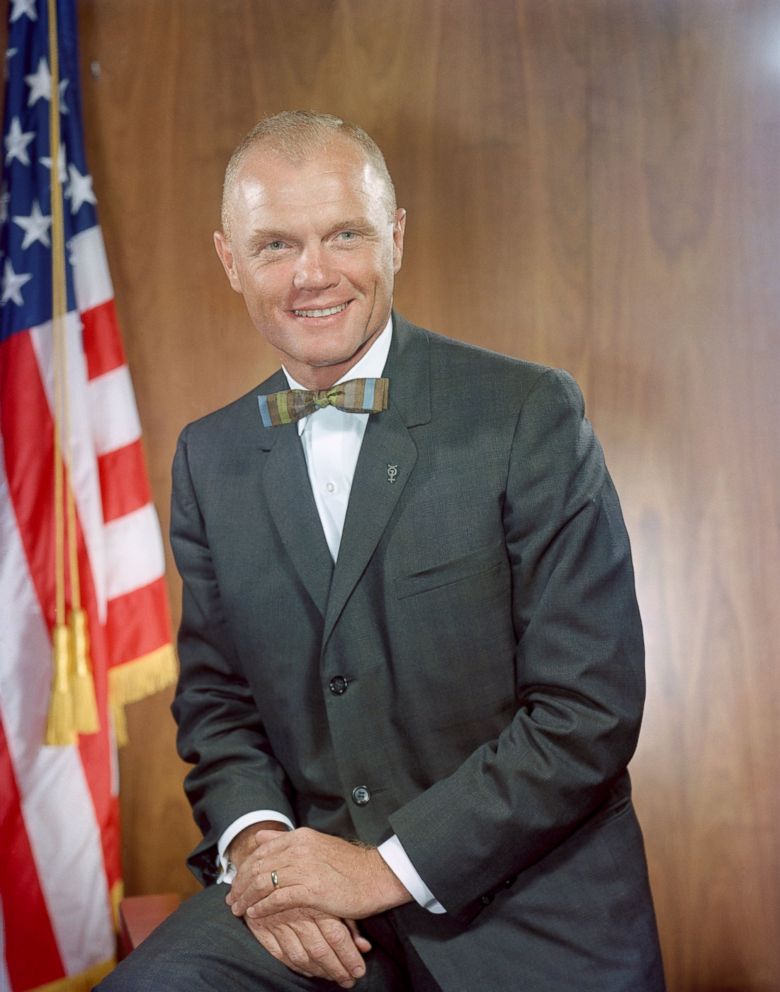
Glenn was having a wonderful time. But then there was trouble. As he began his second orbit, Mission Control received a signal suggesting that the heat shield, designed to prevent the capsule from burning up during re-entry, had come loose. Worried controllers feared they might lose Glenn. They ordered him not to jettison the capsule's retro rockets, strapped on over the heat shield, after he fired them to descend from orbit.
First American to Orbit Earth
The outside of the capsule heated to 3,000 degrees Fahrenheit as the atmosphere slowed it. Glenn watched as chunks of debris flew past the window and wondered whether it was the retro pack or the heat shield breaking up.
It held. He splashed down safely in the Atlantic Ocean and was greeted as perhaps America's greatest hero since Charles Lindbergh.
Crowds mobbed him at a ticker tape parade in New York. Kennedy, who saw Glenn's star power, welcomed him at the White House. He returned to work at NASA and lobbied for another flight, but the Kennedy administration had quietly let his bosses know he was too much of a national icon to risk in space again.
Life in Politics
So he left NASA in 1963 and went into business, investing in, among other things, Florida hotels around what would soon become Disney World. He ran for the Senate as a Democrat from Ohio and made it, on his third try, in 1974. He was re-elected three times, spending 24 years on Capitol Hill.
"I guess I've looked at my whole life as being a service to my country," Glenn said in 1976.
That year he sought the Democratic nomination for vice president but lost out to Walter Mondale.
In 1984 he sought the Democratic Party's nomination for president but did poorly in early primaries and withdrew, $3 million in debt.
In 1989 he and four other senators were accused of improper interference in an investigation of Charles Keating Jr., the chairman of a struggling savings and loan association who had donated $200,000 to his campaign efforts. The senators became known as the Keating Five. Two of them — Glenn and Sen. John McCain, R-Ariz. — were exonerated by the Senate ethics committee, but the panel found that Glenn exercised "poor judgment" in trying to help Keating.
Glenn remained in the Senate for another decade, rising in seniority. He focused on foreign affairs and national defense.
Return to Space
In all those years, he said, he was still restless to return to space. Finally, 36 years after Friendship 7, he got his chance.
Glenn approached NASA with the argument that the degenerative effects of weightlessness were remarkably similar to what happens to the human body as it ages — and that as a healthy man in his 70s, he would make an ideal test subject.
Outsiders scoffed that a senior senator was trying to get a joyride, but NASA managers were intrigued. If there were medical experiments worth doing, that was fine with them, and there would be something poetic about having Glenn, who helped begin the space age, close out his career with a return to orbit.
On Oct. 29, 1998, Glenn and six other astronauts — all of them young enough to be his children — boarded the space shuttle Discovery and lifted off from Pad 39B at the Kennedy Space Center. Over the next nine days, they circled the earth 134 times, released and retrieved a small satellite, did astronomy and biology experiments and, mostly because of Glenn's presence, got worldwide attention. Glenn, the first American to orbit the earth, now became the oldest. He was 77.
In his later years he and his wife retired to Ohio, lending his name to a school of public affairs at Ohio State University and making occasional appearances to promote human exploration of space.
"One thing I promised Annie the day we were married," he once said, "is I would do everything I could to keep life from being boring."
